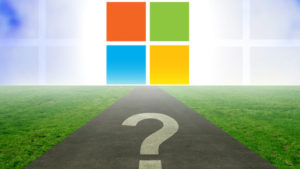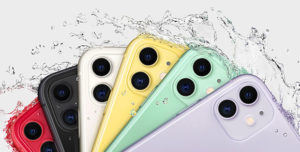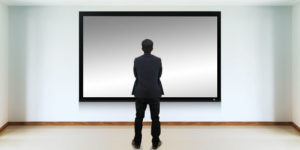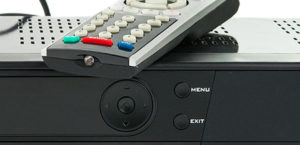
The retail space is changing. Twenty years ago we used to shop and buy in person at retail stores. Ten years ago, the Internet started a change Wave. We could buy online but were not ready yet. So we shopped online, but we still bought in person at stores. Now we have reversed this trend completely. Today we shop in retail stores to see and touch, but we buy online because prices are lower.
This trend has reshaped the marketplace, and it is not done. Many companies could not handle the shift. Large retailers like Borders and Circuit City have closed their doors forever. Others like Barnes & Noble and Best Buy, which we thought would be strengthened by less competition, are still struggling with problems created by this shift.
At the same time, Internet companies like Amazon.com have exploded with growth during the last 10 years. And as we see many of yesterday’s retail leaders like Sears fade, we also see them going online to try to claim victory there.
Some companies are successful. Others are complete failures. That’s what I’ll dig into in this column.
My Pick of the Week is something brand new that MetroPCS is doing with local television on the wireless handset.
Loose Keyboards Sink Ships
Over the years, I have watched CEO Brian Dunn guide Best Buy through both good and bad times. One thing about Dunn and Best Buy — when there’s a screwup, the company takes responsibility and apologizes. Take the mistake made this holiday season, for example. Believe it or not, talking with and staying close to customers can even help companies that make a mistake to live through it — and even get stronger. Companies that don’t take responsibility will lose, as I will explain.
What’s funny is every time Best Buy hits a rough patch, the media writes the company off — this has happened time and time again. I find it laughable, but it hurts the company when this happens. Sometimes more damage can be done by loose keyboards than by real problems. Best Buy has challenges, for sure, but they are an important part of the process.
Yes, Best Buy has to update and ride its next Wave. It can be a success both in the online world and the retail world if it can update the brand. It has begun. It has smaller, specialty wireless phone stores in malls. This is exactly the kind of thing it needs to do — but much more. What is the next Wave for Best Buy?
Barnes & Noble is remaking itself with its Nook e-reader and tablet line. This part of the business is new and expensive for the company, but it is its next Wave. It is a rapidly growing and vital part of its future. This comes with its own challenges. B&N must learn to compete on the loud stage against companies like Amazon and Apple.
B&N’s retail side is just as important for different reasons. The problem is it has not updated the brand of the retail stores and their image in the marketplace. They look the same as they did 10 years ago. In that respect, it is on the downside of that Wave. What will it do to create the next Wave?
If both Barnes & Noble and Best Buy can update their Waves and brands, they can regain their strength and win. Will they?
Can they? That is the big question. Their futures depend on it. While these first efforts are good, they must continue, because these steps are not enough.
Follow Amazon’s Course?
One easy path for Barnes & Noble is to follow Amazon, now that it has Apple in its sights. Amazon not only sells books online, but also tons of other things both from its own shelves and from countless smaller firms that sell their products on the Amazon.com site.
One thing that makes Amazon’s model work is trust of the brand. Customers are taken care of like gold. Others do this successfully as well, like online clothing retailer LL Bean or Zappos shoes. There are so many good operations that make you feel special and taken care of. They make you feel comfortable — even when you’re dealing with one of their partners and not them directly.
That’s where the power and magic of the brand comes into play. That brand relationship is what Amazon is building its future on. Companies must protect and build their brand. If they don’t, they eventually lose, don’t they?
Amazon is also expanding to compete with Apple. Later this year, it will start selling smartphones. So, it will offer books and merchandise, Kindles and smartphones, and tie it all together under the cloud.
This is brilliant. Successful. Profitable. Competitive.
Why can’t Barnes & Noble follow? It can. In fact, there are many other key areas it could grow into. Will it? That is the question.
If it does, they can compete and grow. If it doesn’t, I am afraid it will decline. Sticking to one segment — like books, which worked through the 1990s — may not work any longer.
Sears, with its new push online, is a good example of what can go wrong. It is a longtime American brand. A historic company. You would think it would care about its brand.
However Sears retail stores are struggling. The company sees an opportunity in following Amazon online. Its online store sells stuff from Sears and many smaller businesses as well. I like Amazon — so I tried Sears.
Customer-Service Disaster
I ordered a video game for my nephew in the middle of December. I was notified that it was mailed the next day. Mailed — not shipped? Well, OK. As long at it would arrive in a few days.
It never arrived. I sent several emails to both the selling company and Sears over several weeks. The day before Christmas, I emailed them once again, asking where it was.
Bottom line: I never heard from the smaller company at all, and it’s been almost a month already. At least Sears would take care of me, right? I kept getting excuses from Sears — but no results.
Sears kept saying it needed five days to hear from the vendor. I heard that excuse several times over several weeks. So much for customer care.
Finally, I gave up. I called American Express about my credit card purchase and it took care of me. It took the charge off my account with a smile. That is why I always use American Express — I can count on its service. It’s a company that cares about its customers. That’s why its customers care about American Express. That’s why it is successful.
As for Sears, I finally just received a form letter by email signed by Imran Jooma, SVP of e-commerce, saying the company was sorry it did not meet my needs and that it had refunded my purchase price and hoped I would shop there again.
Sears failed. This was a holiday gift, remember. I got no communications and no help. Therefore, I can no longer trust Sears with my purchases. Obviously, if this is the way it deals with customers, it will not survive.
Sears does not understand — like Amazon and Best Buy do — that the primary key is to keep the customer happy and to stay close in order to keep the customer. The rest is just noise.
All the money Sears spends on advertising and public relations gets customers in the door or to log on. After that, it’s all about the service — and in my case, Sears failed.
The sad part is I don’t even think the company realizes it. Without that realization, Sears does not have a chance to succeed. Compare its service to the world-class service of American Express, Amazon, Apple, Best Buy and Barnes & Noble. The difference is stark.
There are serious challenges as companies remake themselves. One thing is for sure — some companies will succeed, and others will fail.
What about your company? Are you hitting home runs with customers and winning against competitors, or are you failing? I am sure you can give me plenty of examples as well.
There are plenty of companies on both sides. The writing is on the wall. The key question is which side is your company on? And what are you doing about it? digital television service by using existing broadcast spectrum. That way, companies can deliver local TV to mobile devices.
The delivery method is different as well. Instead of sending the television signal to your device over your wireless network, the new venture uses new technology and an old-fashioned approach.
Remember before cable television when we received a signal over the air? When we had an antenna on the roof or on top of the television itself?
In this case, local television stations install a new way to deliver their signal for wireless devices and then simply broadcast. Next-generation wireless handsets from Samsung have the ability to pick up these signals and show them on screen.
The first year or so will be free to the customer, so this is a great value. Customers just have to purchase the new handset. After there’s a large enough customer base, MetroPCS will decide how to monetize the idea. It could sell advertising, or it could charge the customer, but that decision is still down the road.
In this first stage, as long as you have the right handset, you can get free local television — and that is the good news.
This service is not available in every market yet. Local television stations have to upgrade the way they send their signals. This first year is a building time. You can find out from MetroPCS if the new service is available in your area.
I have not yet used this yet, but the idea sounds great. How successful will it be? Good question. Depends on how well MetroPCS markets the service and how much users really want to watch TV on their handsets. This is an interesting time in wireless with all these new devices and innovations.













































Social Media
See all Social Media